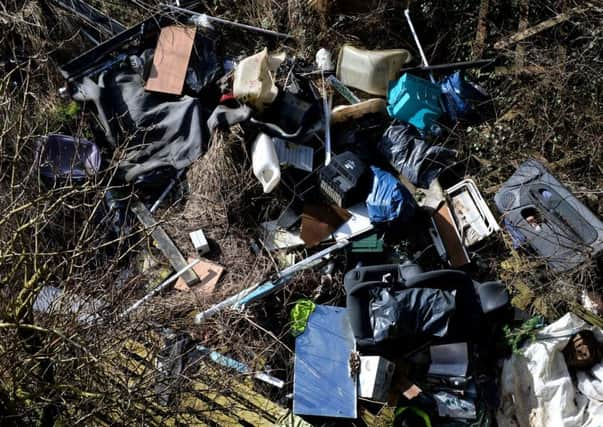Rother fly tipping reaches record levels


The matter was raised at a meeting of Rother District Council’s overview and scrutiny meeting on Monday (June 10), where councillors heard there had been 579 fly tipping reports within the district in 2018/19.
The figure marked an all-time high for the authority, as well as 44 per cent increase on the previous year (there were 402 fly tipping reports in 2017/18).
Advertisement
Hide AdAdvertisement
Hide AdIn light of the rise, committee chairman Cllr Paul Osborne asked if it could be attributed to the introduction of charges at East Sussex County Council’s household waste and recycling centres.
He said: “Do we know is that just general rubbish as usual being dumped or is it stuff that is now attracting a charge at the county [council’s] tips?”
In reply, Rother’s chief executive Anthony Leonard said East Sussex County Council had been asked to look at the issue to see if its charges were having an additional impact.
However, he added, there had also been a significant increase in fly tipping reports on a national level.
Advertisement
Hide AdAdvertisement
Hide AdAccording to council papers, this has seen The Local Government Association raise concerns about ‘inadequate sentences imposed by the courts when flytippers are prosecuted, which do not act as a deterrent’.
Rother’s figures show higher than average reports of fly tipping throughout 2018/19 – reaching a high of 165 reports during quarter two (July to September).
The charges, however, had only come into force in October, the third quarter of the year and after the largest increase in fly tipping had already been reported.
Advertisement
Hide AdAdvertisement
Hide AdWhile fly tipping reports remained high throughout this period – with 133 reports between October and December and 135 reports between January and March – there was no obvious spike in the number of reports.
However other councils in the county have spoken of a rise in fly tipping reports for this period.
The matter was raised during a full council meeting in Wealden District last month by Independent Democrat councillor Daniel Shing.
During the meeting, Cllr Shing asked the authority’s lead member for planning and development Cllr Ann Newton if there is a link between the county council’s new charges and a rise in fly tipping during the first quarter of the year.
Advertisement
Hide AdAdvertisement
Hide AdIn a written response published since the meeting, Cllr Newton acknowledged there had been an increase in fly tipping numbers, but said there was ‘currently no evidence’ to suggest a causal link.
She said: “The council is aware of a rise in fly tips in the first quarter of 2019 following the introduction of the charges in October.
“There is work underway between Wealden District Council and East Sussex County Council to review the types of fly-tip in order to monitor any impact of the charges.
“However, there is currently no evidence to suggest a direct causal link.
Advertisement
Hide AdAdvertisement
Hide Ad“By way of example, the types of waste in many fly-tips would not have been accepted at household waste sites prior to the introduction of the charges and so cannot have been directly generated as a fly-tip as a result of the charges being brought in.”
